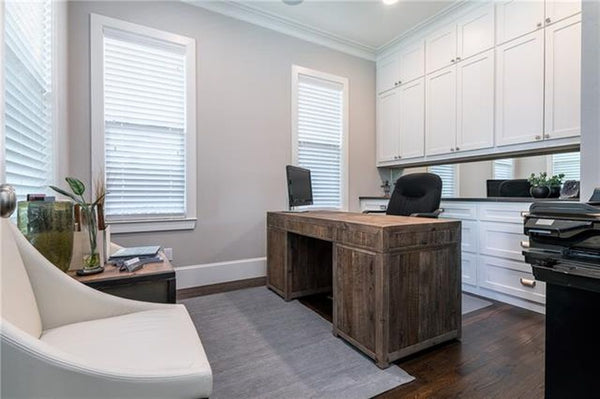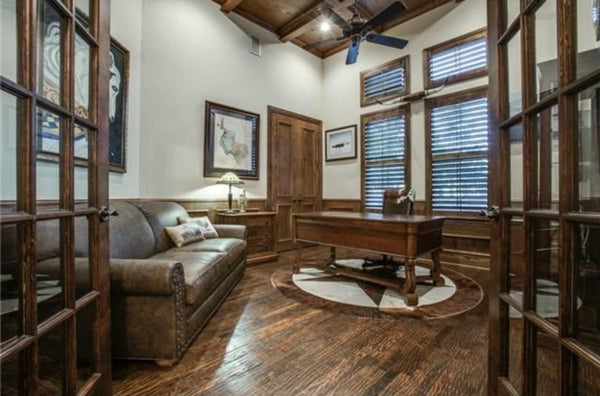A growing trend of professionals with full-time or part-time jobs based out of their homes has increased emphasis on creating the ultimate home office. Whether you're designing a new floor plan, or renovating an existing space there are a few tips we'd like to share to help increase productivity and functionality in your space. While the dining room table or living room couch are frequently used as work spaces, they are typically not the most practical areas to settle in for a long work day. Ideally, your home should have a dedicated room that serves as a home office. Designing a home office that you visually love and function in will provide a better work-life balance, increase productivity, and make working more enjoyable!
What are some things to consider now that you're ready to create your new work space? Below are 10 tips for designing the home office of your dreams.
Choose the Location Carefully
Let’s start with the obvious: seating. The quality, design and features of the office chair you choose can vary significantly, so if you end up with a chair that is uncomfortable, even if it looks attractive, you might end up subconsciously avoiding the office altogether. Take the time to try out as many chairs as possible to find the one that suits you best. For the desk, choose one that is large enough to accommodate your supplies and electronics while allowing sufficient space to work. The last thing you want to do is constantly move papers, printers and other items to clear a work space. Also, for those who spend most of their day in front of a computer, consider adding a height-adjustable desk, which can help improve posture and reduce back pain.

Photo Credit: The Lighting Judge
Lighting in Your Home Office
Most home owners find that an office that is bright and inviting increases productivity and makes work more enjoyable. Lighting should enhance the various roles of the room, so consider using a combination of ambient and task lighting. Ambient lights establish the overall level of lighting in the room. Ceiling-mounted fixtures and recessed lights typically have the best effect. For task lighting, choose desk and floor lamps that fit your style and serve a distinct purpose such as working at a computer, writing or reading. The most important thing is that the light sources are balanced with similar color temperatures.

Home Office for Everyone
For those who have kids, it is possible to build an office space that everyone can use effectively. Depending upon the ages of those who will use the office, design considerations may need to be made. It is important to create a space that is equally inviting to both younger and older family members. Choose a color palette that is bright and cheery, but not distracting. Determine a furniture layout that is functional. The furniture arrangement should create designated work spaces with enough seating for three or four people. Corner desks can be a good use of space, as well as “T-shaped” desks that provide extra seating in the middle of the room. Be strategic with shelving to maximize space even further. While corner shelves and floor-to-ceiling shelves might work for some, they can also consume valuable space that could otherwise be used for desk space. Consider installing shelves above the 4-foot-line to allow for more seating options along the room’s perimeter. Creating the perfect home office can take a lot of time and planning. If done right it will not only will benefit you and your family, it will also help enhance the value of your home.











































